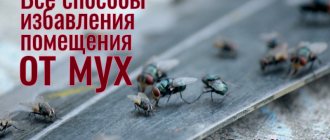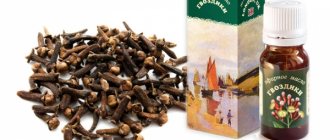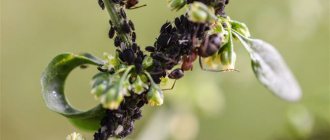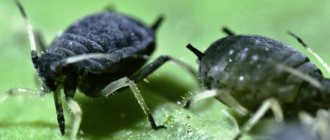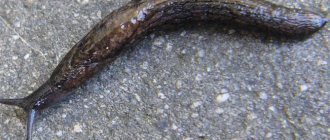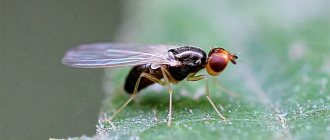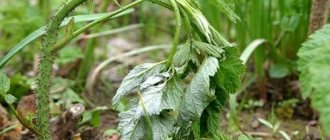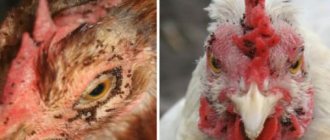Chashel is a beetle that attacks wood. Having appeared in a house, it most often settles in wooden walls, foundations, beams, and sometimes it can be found in pieces of furniture and books. The most preferable wood for it is wood whose moisture content is at least 14%. But the real pests are not the adults, but the larvae. They gnaw holes in trees and fill them with their excrement. After some time, they spill out onto the floor and look like wood dust.
Description of appearance
In our area there are several types of shashel - furniture, house. Each of these pests causes significant damage to wooden structures, furniture, even books and leather goods. Many people know what a shashel looks like, but they don’t realize that this is it:
- elongated body with a durable shell;
- color brown or black;
- the size of pests is several millimeters;
- on the head there is a long curled mustache with stripes;
- three pairs of long, fairly powerful limbs.
The woodworm itself is harmless and does not pose a threat to human life or well-being. But living with him under the same roof threatens serious damage to property.
Important!
The shawl larva is a thick caterpillar of a dirty yellow color with a well-developed mouthparts. It does not leave its burrows, so it is difficult to see it. But characteristic sounds give away their presence.
A photo of the shashel is presented below; you can clearly see all the features of the body structure and color scheme.
Shashel
How to get rid of shashel in the house: the best ways
If there are wooden structures in your house, then the shashel, a wood-boring beetle, will probably appear in the near future.
The reason for the appearance of such a pest is negligence, namely, failure to treat the wooden material with the necessary chemicals against parasites of this kind.
Shashel can be dangerous itself, but most of all, their larvae cause trouble, digging long passages in floor boards, ceilings, window sills and other household and household items. Today the question on the agenda is how to quickly get rid of shashel in the house.
Features of life
The presence of shashel in a tree is indicated by a specific sound, similar to the ticking of a clock or chirping. It reproduces during the mating period of beetles. You should look for them on the surface of the wood. Because woodworms leave their burrows during mating.
The location of the nest, as well as the degree of infection, is determined by the sound. The more intense and louder the ticking, the more pests there are in the house. Another characteristic sound is created by the larvae, which gnaw wood day and night with a special appetite. The burrows are filled with excrement, which crumbles over time, resembling sawdust or wood dust.
Adult beetles spend most of their lives in the nest, making more and more new passages in different directions. But the main pests are the larvae, which do not leave their burrows at all.
On a note!
Infection of a house occurs during construction, when using material with larvae, cabbage eggs, in old wooden houses with cracks in the wall, window sills, and doorways. And also in a new design, if no attention was paid to careful processing of the wooden components.
Peculiarities of shashel life
Characteristic
In Russia, two types of shashel are most often found: house and furniture.
And at the same time, each of them poses a serious danger to home furniture and wooden structures of the house. The appearance of this pest will be indicated by a special sound, similar to the ticking of a clock. Insects reproduce it during the mating period by hitting their heads on wood. But in order to fully gain confidence that it is the shashel in your house, it is advisable to know what it looks like. The body of an adult insect is brown, cylindrical, convex, and elongated.
Development
Development in the egg takes from one to four weeks, after which the larva emerges from it. She molts periodically and at the end of the last phase of development, her body length is about 4 mm, width - 2-2.3 mm.
The shawl larva begins to spoil wood from the moment it emerges from the egg. The starting point is the place where the egg was attached to the wooden surface. Gradually the larva moves deeper, leaving behind narrow passages.
Having satiated, the young shashel goes to the surface and at the same time leaves behind a protective layer, the thickness of which is about 1 mm. Depending on the species, the lifespan of the larvae of these beetles can vary from two to three months to several years.
After some time, the larva goes deep into the wood, where it pupates, and then an adult appears. In an adult shashel, dotted grooves are clearly visible on the elytra.
Larval development
The shashel develops in the egg from 1 to 4 weeks. The first stage larva is a caterpillar. Starts sabotage immediately after birth. Gnawing through numerous passages. She molts periodically and gradually increases in size. The last stage larva reaches 4 mm.
It is difficult to say how long the shawl beetle lives in the larval phase. According to various sources. develops in the conquered territory from 3 to 15 years. At the last stage, it goes deep into the tree and pupates. It emerges to the surface as a wood-boring beetle that has already formed. But after mating, it returns to the tree again to build a nest and lay eggs.
How to identify tree infestation
Lumber affected by insects has characteristic differences:
- visible remains of tunnels under the bark of the wane - bark beetle;
- abnormal lightness of the board, holes Ø 2–5 mm on the surface, while the board appears intact, there are no moves - termite or shashel;
- wood flour (dust), sometimes black-brown in color - all insects.
Wood affected by pests is “not treated”, because insects always strive to capture the largest space and are distributed throughout the entire element or structure, as long as their number is sufficient. If signs of a beetle are detected, you should refuse to purchase the material. If the beetle is found in existing stocks, the material should be rejected and the infested products should be burned.
The presence of larvae in an existing structure can be determined by ear - they make a characteristic grinding or tapping sound as they bite into the wood. In the old days, this sound was called the “death clock”, because practically nothing was known about the possibility of fighting.
Fighting methods
Methods of fighting insects How to get rid of shawl, there are several methods. The choice depends on the degree of infestation, financial capabilities, and personal preferences.
- Treatment with insecticides. Antiseptics and broad-spectrum drugs are used.
- The use of folk remedies. A special mixture is prepared that blocks the access of oxygen to larvae and adults, causing death.
- Exposure to microwaves. Carried out by specialists using modern equipment. The generator produces microwaves that are directed at the infested wood. It warms up and kills shashel larvae and beetles. The disadvantage of this method is that it is labor intensive and expensive.
- Dry steam treatment. The action is similar to the previous method. Dry steam heats the wood and reduces humidity. In such conditions, the shawl larvae and the beetles themselves die.
- Fumigation - fogation, fumigation. Hydrogen phosphide is used, which is capable of penetrating deep layers of wood and destroying shashel larvae and adult beetles.
At home, a chemical method is used using insecticidal preparations and folk remedies.
The main advantages of phosphine fumigation:
- A high degree of permeability makes it possible to infect insects located even in deep layers of wood.
- Phosphine has a high degree of toxicity, so it can be used not only against insects, but also for rodent control.
- The gas, penetrating the body of an animal or insect, affects all systems and organs, leaving no chance of survival.
In the fight against shawl by fumigation, the following drugs are used: magtoxin and phostoxin.
Magtoxin is a preparation based on magnesium phosphide, ammonium carbamate and paraffins. When exposed to air, magtoxin releases hydrogen phosphide, which has high insecticidal activity. Magtoxin decomposes quickly almost completely, and the residual dust does not contain metal phosphide. This cannot be said about other drugs of the phosphide group.
Fumigation with magtoxin is intended for warehouses and storage facilities that occupy large areas. The fumigation time depends on the area of the room and its gas permeability. No traces remain on the treated surface. Through ventilation after such treatment should last 3-6 hours. If safety precautions are followed, Magtoxin is completely safe for specialists working with it.
Phostoxin is a fumigant with a high content of aluminum phosphide. Gas can penetrate under sealed packages. Since the gas interacts with copper, silver and gold, they must be protected during processing. Used for processing warehouses and storage facilities.
Microwave method (MW)
- This is a way to get rid of shashel in residential premises. The microwave emitter is an autonomous installation that carries out disinfestation of premises. Ideal for fighting insects, including shawl, in everyday life. Of course, you can purchase such a device and carry out pest control of premises on your own, but there are a number of nuances that can be missed without special knowledge.
- There are many types of shashel, each with its own characteristics. For example, each type has its own depth of penetration into wood. The heating temperature of the room depends on this, which the specialist will select optimally.
- Heating the entire room is impractical and costly. Professionals know exactly where and with what power to warm up.
- Additionally, equipment will be required to identify foci of the spread of shashel.
- You need to work taking into account the heat transfer coefficient of the material, so you will need a laser pyrometer.
- It is necessary to strictly follow safety precautions when working with equipment.
- To prevent the wiring from catching fire and communications from being damaged, heating should be carried out at a certain angle.
- The equipment is expensive and its purchase will be impractical. It will be cheaper to invite specialists and solve the problem once.
Microwave rays, affecting insects, completely destroy them. However, they do not have any negative effect on wood. The main difference between microwave and chemical treatment is the local effect on the specific area being treated. The room temperature does not increase during microwave operation. By affecting a specific area, microwave rays provoke vibration of water molecules, which leads to heating of the wood to the required 56 C°. This temperature is sufficient to completely destroy the eggs, larvae and adults of the shawl. The equipment is completely safe for others; when carrying out the treatment, evacuation of household members and household appliances is not required. Today, microwave is the most effective method of getting rid of shashel in residential premises.
Shashel is a wood-boring beetle whose larvae feed on wood. That is why the insect causes a lot of harm to owners of country houses and cottages made of natural wood. But if your home is built of brick, this does not mean that you will never encounter shashel; it can damage wooden furniture. In this article we will tell you how to get rid of this annoying “neighbor”.
You don’t have to experiment and buy a special product at a hardware store. Nowadays, the most popular woodworm poisons in the retail chain are: anti-shashelin, anti-beetle, Impralit. These substances are used not only to combat beetles, but also for prevention purposes. Apply these poisons once a year to wooden products and fruit trees, and you will forget about shashel forever.
What insects are the most dangerous for wood and what do you need to know about the larvae of wood pests? Is it possible to detect the presence of insects in lumber or structure? You will find answers to these questions in our article.
Proven Recipes
If a shashel has started in a wooden board, getting it out of there is problematic. But you can make sure that he either crawls out on his own or ends his life in a hole. Initially, you can use folk remedies.
- Boil 10 liters of water, mix hot with 250 g of potassium fluoride. Stir for 5 minutes, pour into a spray bottle. They process the wood from shashel. Work should be carried out with rubber gloves.
- To 10 liters of lime turpentine add 500 g of wax, paraffin, 300 g of creolin. Stir until smooth and process the wood.
- 3 liters of turpentine are mixed with 1 liter of gasoline. Using a brush, the wood is removed from the shashel.
A significant drawback for all traditional methods is the unpleasant, pungent odor. It is better to fight shawl in this way in a non-residential building or from the outside. Wood soaked in kerosene and gasoline becomes a fire hazard. Therefore, before using the product, you need to weigh the pros and cons.
Conclusion
In fact, there are many more methods of combating shashel than the chemicals and folk methods indicated in the article. The problem is that only specialized services can use such methods, the work of which not everyone can afford - hot steam treatment, fumigation, use of microwaves for complete destruction.
But, of course, the easiest way is to carefully inspect the wood when purchasing and during storage, and also regularly check the furniture for pest damage. And do not forget to treat wooden items immediately after they appear in the house with special protective agents.
Professional preparations
Professional preparations for the pest Treatment of wood from shashel is carried out with antiseptics and insecticides.
- Antibug. A universal product against all wood pests. Destroys adult shawls and larvae at different stages of development. Process thoroughly once. But to consolidate the effect, repeated treatment is recommended after 14 days. Used for prevention. The remedy for shashel in the house is not highly toxic, but it is necessary to work with rubber gloves.
- Antishashelin. Destroys all types of wood borers. The composition contains silicones that can penetrate into the deep layers of wood and destroy shashel and its larvae. Used for processing old wood, fresh wood, furniture, antiques, floors, any wooden structures. Preserves the integrity of the tree and does not spoil the appearance.
- Woodtex. According to customer reviews, one of the most effective drugs. Helps destroy shashel and protects against re-infection for six months. It is recommended to treat several times throughout the year, every 3 months. The product is poured into the shashel passages with a syringe. Seal the holes on top with Vaseline and paraffin. For prevention, the procedure should be carried out in the middle of summer and winter. If the wood is severely damaged, treat the surface with a brush and apply a thick layer of the preparation.
- Lignofix. The antiseptic does not contain toxins. After use, it does not lose its properties for 10 years. Destroys chitin-containing insects. It enters the body, disrupts biological processes, and leads to death.
In order not to think about how to quickly and effectively get rid of shashel, it is necessary to inspect wooden structures twice a year and carry out preventive treatment.
Neomid 100 “Anti-bug” is a good remedy in the fight against beetle pests
This antiseptic composition was created specifically to protect wood from insects and destroy parasites at any stage of development. It can be used for both external and internal processing of wooden surfaces. To successfully use the biocidal complex Antizhuk Neomid 100, you do not need any complex tools; it is enough to dilute the concentrate in warm water in a ratio of 1:4 and mix thoroughly. The antiseptic is applied to a wooden surface that has been previously cleaned of dirt, debris, dust, old paint and varnish in several layers. Before full treatment, it is recommended to apply a little of the composition to the isolated area to check whether the wood will be stained. For preventive treatment, the consumption of Antizhuk Neomid 100 should be approximately 150-200 mg/m2, while 2-3 applications are enough for the antiseptic to be absorbed, thereby providing reliable protection.
Shashel in the kitchen
Housewives often find small dark-colored bugs, similar to shashel, in flour and cereals. In the kitchen, the woodworm lives only in wooden structures and is not interested in food supplies. This is another type of pest that looks like a shashel.
The methods of fighting are extremely simple. Throw away the contents, thoroughly wash the containers in which supplies were stored, and carry out a general cleaning of the cabinets. Wash the furniture with a vinegar solution.
Shashel does not live in cereals. This is a completely different type of pest. Therefore, there is no point in using antiseptics and insecticides in this case.
Preparations for shashel: proven folk remedies and industrial solutions
Chashel is a beetle that attacks wood. Having appeared in a house, it most often settles in wooden walls, foundations, beams, and sometimes it can be found in pieces of furniture and books. The most preferable wood for it is wood whose moisture content is at least 14%. But the real pests are not the adults, but the larvae. They gnaw holes in trees and fill them with their excrement. After some time, they spill out onto the floor and look like wood dust.
Ceramics
Tsenin tiles were molded from red-burning clays with the addition of sand, lime and other raw materials. Then they were dried and fired at a temperature of 900°C to give them the necessary strength and resistance to water before being painted with colored glazes and enamels. The relief was painted by hand with brushes, after which the tile was fired again (950-980°C). Today in Russia, the complex of buildings of the New Jerusalem Monastery (17th century) is considered the most grandiose monument where polychrome ceramics has found widespread use. More than 50 thousand valuable tiles were used here.
How long do shashels live?
The type of insect plays a role here.
In general, they live from several months to several years. This beetle damages the tree at a fairly fast speed. If it damages wood for a whole year, then after this time you will be able to observe all the affected areas. Just think about it! Caterpillars can pave a corridor 30 millimeters long in a day. And if we take the fact that they live for several years, then it’s simple arithmetic. They can build these tunnels for kilometers. Over time, the larva increases in size and volume, and accordingly, the holes also increase.
How can you tell if you have this bug in your house? It's simple, wood dust will accumulate under wooden furniture. Beetles give preference to aspen, but if they encounter other types of wood on their way, they will not refuse them either.
Furniture grinder: the lifestyle of a beetle
Shashel is nocturnal. It spends its entire life in its tunnels, leaving them only to reproduce. The larvae of this insect are extremely active and voracious. They seal up old passages with leftover wood and their own feces. At the same time, the larvae’s diet includes only wood, i.e. they are not able to eat other types of plant food. Adults do not feed and live for a very short period of time. Their sole purpose is to mate and lay eggs.
Reproduction and development
Chashel reaches its maximum activity in May or June. The lifespan of the imago is only 6-28 days. Males bang their heads against the walls of passages to attract females. This sound is called the “death clock.” After mating, the female finds suitable wood and firmly attaches a clutch of eggs to it. Thus, the tree becomes infected. Egg development takes 12-15 days. The larva immediately begins to feed, creating new tunnels. She sheds periodically. The number of molts may vary and depends on environmental conditions. At this stage, the insect remains for a long time. The overall development of a beetle under normal conditions ranges from 1 to 3 years.
Shashel (furniture grinder), photo
Chashel (furniture grinder), larvae
Holes in wood from a furniture sharpener

